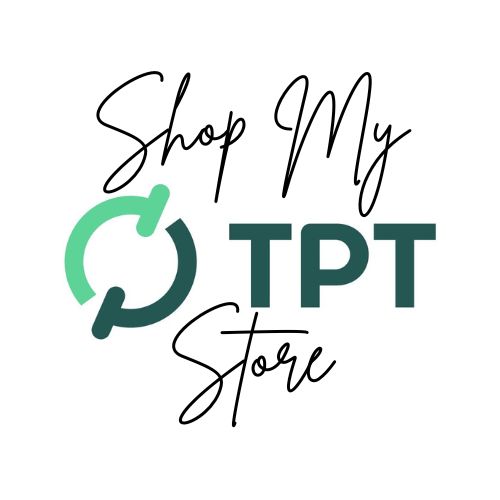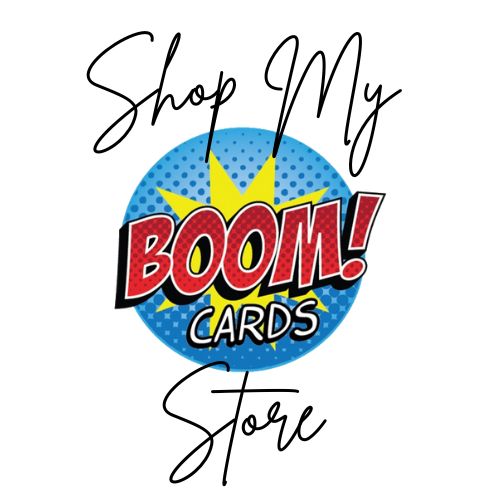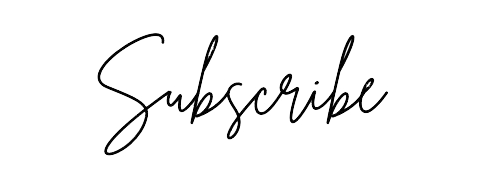
Post #6 in Blog Series: “Self Contained Class Sample Schedules”
We have come to the end of this blog series on schedules in a self-contained special ed class. I have talked about schedules for you, paras, and substitutes. I’ve discussed starting your schedule and schedules for the first days of school… and what to do about interruptions to your schedule. I’ve shown you over 14 schedules so far! So I thought to finish up I’d answer some questions that I’ve gotten over the last month while writing this.
Plus, I would like to announce I just updated the editable schedules resource in my TpT store so it now includes all the schedules in this series.
Q: What is Chrome?
A: That is short for Chromebook laptops, but also code for any other independent work. I use the word “chrome” because it has fewer letters than “independent work.” My paras and students know it refers to using technology like Chromebooks or tablets, as well as any other independent work I assign. (Chrome was used in a schedule in blog post #3.)
Q: What type of activities do you do all day with the students?
This is the most frequent question I have gotten about my schedules! I will attempt to answer this huge question. First of all, I try to teach and allow my students time to work on their IEP goals. However, that is not all I do during the day. I think it would be hard, if not impossible to write an IEP goal for every concept/standard that is taught during the school year in a self-contained class with multiple grade levels. I’ve taught students who had mild/moderate disabilities such as autism, specific learning disability, other health impaired (such as ADHD), mild intellectual disability, etc. so my focus was on academics and not so much on functional/daily living skills that might be the focus of some self-contained classes. Almost all of my students had speech, and occasionally I had a student who was deaf, hard of hearing, visually impaired or with orthopedic impairment. Also, I am now itinerant so I have not used some of the newer curriculums. But I hope that whatever your population and grade levels are, you will find some nuggets of information that will help you! So with all that being said here are some ideas of activities that I have done in my self-contained class. In a perfect world, I would have a link and photos for every one of the activities…but that would be next to impossible! However, you can probably find most things by doing a google search for something that interests you if I haven’t provided a link to it.
Activities usually done in small groups with myself or a para:
- Reading lessons such as Reading Mastery and Spelling Mastery (a part of Reading Mastery), TouchMath lessons/work packets, guided reading or writing activities.
- Calendar/morning meeting/personal data sheets, consumable math books or math review games, Handwriting Without Tears.
- Daily curriculum from Autism Helper, consumable reading workbooks from general ed’s adopted curriculum.
- Fun lessons like cooking, art, certain science experiments, holiday stuff.
Here are activities I will try to do with the whole group at times, but it depends on how many students you have, how many paras you have, etc.
- If you’ve never heard of it, go to www.gonoodle.com and get a free account! This is great for brain breaks during the day or when you have to stay indoors during recess. Just be careful if you have a big spread of grades since big kids would accidentally hurt little kids. I liked to use it in place of PE when I had grades 1-5 (as I said earlier, the big kids can accidentally hurt the little kids if we tried to do PE all together). So I would use GoNoodle if there was a time when kids were coming and going to inclusion classes. For example, Usually grades 1-3 were in class when grades 4-5 were mainstreamed, and vice-versa.
- Depending on the year, we would do read alouds. The library had an awesome program where community members adopt a class and come read every week either in the library or in our class. Mrs. Hillman was the best!!! She understood that my kids might have behavior issues and she was patient and understanding with all. Over four years she really got to know my students and loved on them so much!!
- Science experiments (I love, love these from The Bender Bunch)
- Sensory/explore manipulatives such as 3D shapes/blocks, teddy bear counters, scales and various objects to weigh (i.e. small toys, school supplies or measure out beans, rice, noodles, etc.)
- Various Scholastic magazines (we’d get extras like Let’s Find Out from kinder teachers)
- Watch a movie that goes with the current school-wide literature project (ie. Charlotte’s Web, Alice in Wonderland, etc.)
Students would also do independent activities (sometimes called CHROME on my schedules). This meant using Chromebooks or other technology, as well as independent work tasks or other activities.
- Websites or apps students enjoyed were: Boom Learning, ABCMouse, ScootPad, Cool Math Games, Letter School, iTrace, Writing Wizard, BrainPop, listening station (online or books with CDs from Scholastic or that myself or others would burn on audio CDs.)
- Independent work tasks: file folder activities (matching or categorizing colors, letters, numbers, math facts, sight words, phonics, comprehension, etc.), pre-vocational or vocational activities (alphabetizing, sorting colored paper clips or other items, collating papers, coloring, etc.), some daily living activities (practice tying shoes, practice locking/unlocking combination locks to get ready for middle school PE). Here are some of the above I have purchased: Autism Helper Work Tasks, Write the Room, plus here is a link to my Pinterest board with lots of independent work tasks.
- Other independent exploration activities: stacking blocks or other things like cups, geoboards, patterned blocks, sensory bins, etc.
- Some activities like legos were used sparingly, maybe once a week, on special days or when the teacher was desperate because of dealing with behavior, etc.
Usually, on Fridays, we had “Fun Friday.” This meant that the first rotation of groups (usually done before morning recess) were normal groups with data collection or spelling test, etc., but the second rotation of centers was usually more fun such as craft projects, science experiments, legos, other manipulatives like plastic bears, puzzles, etc.
This was before STEM challenges got popular, but I did have them do exploration activities like stacking plastic cups in certain ways. For a few years, I had my daughter’s little kitchen in class. I thought the older kids would think it was babyish, but they loved it too. Below is an example of the schedule I used on Fridays. There were three adults in the room so I would type in one column, then copy and paste to the other columns. Then I only had to print one copy on my classroom printer and cut in thirds so we each had a copy. This also happens to be a day when I had a substitute teacher in my place (I usually would do data collection or fluency tests during the first rotation on Fridays, but notice I had the sub do a fun activity instead).
We also did cooking on some Fridays. My mom or a retired teacher friend would come in and help, which was always fun for the kids (thinks green eggs and ham for Read Across America week). My mom was a home economics teacher who later turned in to a special ed teacher at the high school level, so when she came we worked on basic cooking including setting a table. Some examples of what she cooked with the kids were grilled cheese, quesadillas, crispy rice treats, yummy dip with apple slices, etc.
Q: Do you use a general curriculum in a self-contained classroom? Or why?
A: Yes, I will use just about any curriculum I can get my hands on, whether it is current curriculum or an old series which was in the “discard” or “free” pile. The only general ed curriculum I’ve been specifically given (that is also used in general ed classes) at my K-6 school was consumable grade K, 1, and 2 math books. I did hit the jackpot when I got an old series of kinder reading books with teacher’s guides. Since they were old, one of the kinder teachers was generous enough to give me the big books that went with all the lessons!! So yes, I will definitely use a general ed curriculum if it will address my the goals of my students. Once I also got some discarded Read 180 books for fourth graders. In addition, sometimes my class is included in general ed subscriptions such as A to Z reading, BrainPop, Scholastic magazines, etc.
As far as special ed curriculum, I have used whatever I could get my hands on. Reading Mastery (1990s version), Old TouchMath binders, etc. I have also personally ordered additional books from eBay or Amazon to go with previous mentioned outdated TouchMath and Reading Mastery curriculum. In addition, I purchase activities, units and curriculum from stores on TeachersPayTeachers. More current types of curriculum I’ve used are Unique Learning Systems and Reading Naturally.
Okay! I think this wraps up my series on schedules that I’ve used in my self-contained SDC elementary classroom. If you want editable versions of my schedules, please consider purchasing them from my TpT store.
Click here to check it out. Thank you for your patience with the typos (As I said I’ve been writing this during the first 15 days of school so I’m working on these late at night). I will keep editing and I hope to add more sample schedules here or add editable versions to my TpT resource on the same topic. Feel free to submit more questions here or on my Instagram feed: @Lisagoodellequip
Go back and read earlier posts in this series:
Post #1: Making your schedule and dealing with Interruptions
Post #2: Schedules for the first and second day of school.
Post #3: Master Rotation Schedule, and What Adults do
Post #4: Schedule/lesson plans for when you need a substitute teacher.
Post #5: Eight More Schedules
Post #6: (This post) Questions and answers about my schedules (which includes curriculum and activities we’ve done).
You might also like a series I did on this topic over on my podcast called, “Self-Contained Schedule.” Below are links to the three episodes:
- Part 1: Eight Tips to Create a Daily Schedule
- Part 2: Small Group Rotation Schedules
- Part 3: Schedules and Lesson Planning












I appreciate this series! Thanks so much for sharing the details of how you make it all work!
Thank you so much!!!! I love to help others so it makes my day that you have found it helpful!